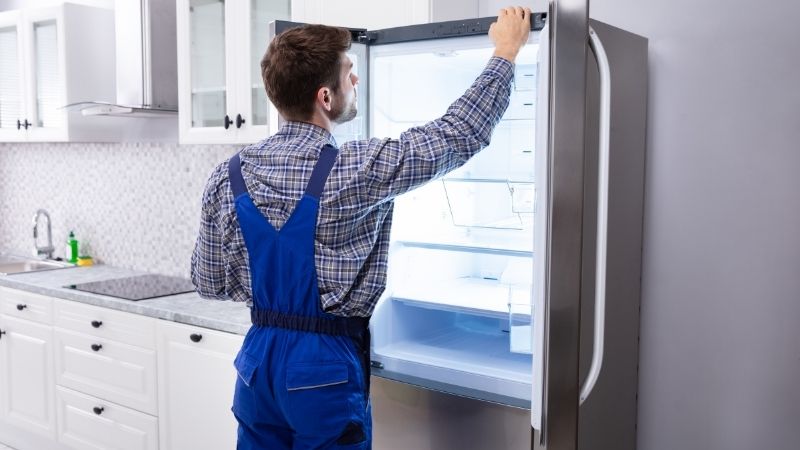Many individuals would not know what to do without a fridge, as there is hardly anything that can quench their dried-out throat like a glass of cooled water.
Although strategies were employed for providing itself with cool water in the ancient world, it definitely was not as convenient as opening a door and getting a glass of ice-cold water. Even if you were able to drink cold water, you surely had nothing to keep your food fresh for long periods.
Luckily, we got an amazing appliance bit to perform all of these things for us - a refrigerator! With the help of a refrigerator, you can not only get cold water whenever you want but you can keep your food fresh for a long time as well. You may like to get the best refrigerator in India to keep your food fresh and cold.
We, at Refrigerator Guide, shall examine the physics of a fridge and particularly the many sections of a fridge, and how they operate together to keep our food fresh for a prolonged time.
Working Principle of a Fridge
The refrigeration and cooling concept is pretty straightforward: it includes eliminating and releasing heat from one spot to another. When a low-temperature fluid is passed by items you wish to cool, heat is transmitted from these things to the fluid that evaporates and carries away the heat during the procedure.
You might already understand that when compressed, gases heat up and then becomes cool when expanded. Therefore when you are using a bike pump to pump air into a tire, it feels warm, but a sprinkled perfume feels chilly.
The tendency of gases to become warm when compressed and cool while expanding, together with certain refined equipment, permits a fridge to cool the things inside it.
Refrigerator Parts
The refrigerator contains different parts like an expansion valve, compressor, and more that play a significant role in the cooling process. Let us discuss all of them individually:
1. Compressor
The compressor is the core of a fridge. It circulates the coolant (refrigerant) around the system and applies pressure to the hot section of the circuit and heats the coolant. It is like pushing air into a bicycle tube - you can feel the heat of the pump as you squeeze the air.
2. Refrigerant
The fluid that keeps the cooling period going is known as refrigerant or coolant. It is indeed a specifically created chemical that can switch between hot gas and a chilly liquid.
3. Evaporator
The evaporator is positioned in the fridge and is the portion that makes the contents in the fridge cold. When the coolant becomes a gas via evaporation, it cools its area by generating an environment appropriate for food storage.
4. Condenser
The condenser contains a twisted set of tubes and is placed at the back of the fridge. It contributes to the liquefaction of the gaseous coolant by absorbing its warmth and then releasing it into the environment.
5. Capillary Tube
The capillary tube is a narrow tube used as an expansion too. The liquid coolant is pushed into the evaporator's low-pressure surroundings via the capillary tube.
6. Thermostat
The thermostat regulates the cooling mechanism by tracking the temperature, and then activates and disconnects the compressor. If the sensor determines that the fridge is cold enough, the compressor is switched off. If heat is too considerable, the compressor is switched on and the cooling cycle is restarted.
How Does a Refrigerator Work?
The coolant, now in liquid form, goes via the capillary tube and becomes a cool gas because of a quick fall in pressure.
When cold refrigerant gas passes in the cooler compartment, the heat is absorbed by food items within the refrigerator. The coolant, now a gas, passes into the compressor that sweeps it in and squeezes the particles into a warm gas having elevated pressure.
Now, this gas carries to the condensing tubes at the rear of the refrigerator, where the coils help disband its warmth to condense and return to its fluid phase. Since the heat from the foodstuff is delivered to the environment through the condenser, it feels warm when you touch condenser coils.
Following the condenser, the fluid coolant returns to the expansion valve, when it drops pressure and becomes a chilly gas once more. It collects heat from the refrigerator and the complete process replicates itself. This is how, the food and beverages remain cold for a long time in the refrigerator.
We, at Refrigerator Guide, assume that this article will help you in understanding the complete working of a refrigerator. Keep coming back to us for more information about refrigerators that will enable you to keep your appliance in a good condition.
